Neem wood, known for its exceptional beauty and remarkable properties, is rapidly gaining popularity as a sustainable alternative to traditional kitchen materials. Whether it's neem wood cutting boards, utensils, or serving platters, incorporating neem wood accessories into your kitchen elevates your cooking experience. With its rich, warm tones and unique grain patterns, neem wood adds a touch of natural elegance to any culinary space.
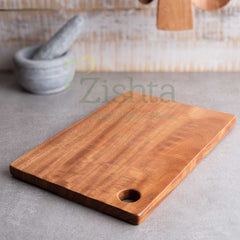

Significance of Neem in various Traditions and Cultures
Neem (Azadirachta indica) holds great significance in various traditions and cultures, particularly in South Asia especially India. Here are some of the reasons why neem is considered important:
- Medicinal Properties: Neem has been used for centuries in traditional Ayurvedic medicine for its various therapeutic properties. It is believed to possess antiviral, antibacterial, anti-fungal, and anti-inflammatory properties. Neem leaves, oil, bark, and twigs are used to treat numerous ailments such as skin disorders, digestive issues, dental problems, and more.
- Purification and Cleansing: Neem is associated with purification and cleansing rituals. In many cultures, neem leaves are used to purify the environment by burning them as incense or by hanging them in homes and temples. Neem-based water is sometimes sprinkled around the house or used for bathing to purify and ward off negative energies.
- Festivals and Celebrations: Neem plays a role in several festivals and celebrations. For example, during the Hindu festival of Ugadi (New Year), neem leaves are consumed as a symbolic reminder of life's bitter and sweet experiences. In some regions, neem leaves are also used during the celebration of Holi, the festival of colou
- Agricultural Significance: Neem is highly valued in agriculture due to its natural insecticidal properties. Neem-based pesticides and fertilizers are used as organic alternatives to synthetic chemicals. The neem tree also provides shade and helps conserve soil moisture, making it beneficial for crop growth.
- Spiritual and Symbolic Importance: Neem is regarded as a sacred tree in many cultures. It is often associated with deities and worshipped for its protective qualities. Neem leaves are considered auspicious and are used in religious ceremonies and rituals. In some traditions, neem leaves are placed near the main entrance of houses to ward off evil spirits.
- Cultural Significance: Neem has become deeply ingrained in the cultural fabric of societies where it grows. Its various uses and associations have been passed down through generations, making it an integral part of traditional practices, folklore, and folk medicine.
Overall, neem holds immense significance in our traditions due to its medicinal properties, purification symbolism, agricultural benefits, spiritual associations, and cultural heritage. It continues to be revered and valued for its diverse applications and contributions to various aspects of life.
Origin of Neem wood Accessories in the Kitchen
The use of neem wood for making kitchen accessories like ladles and chopping boards in India has been practiced for a long time, dating back several centuries. Neem wood, known for its durability, resistance to termites, and natural antimicrobial properties, has been traditionally utilized in India for a wide range of purposes, including household items.
The exact origins and timeline of when neem wood started being used for kitchen accessories are not well-documented. However, it can be inferred that neem wood has been utilized in Indian households for generations, given its availability and beneficial properties. The practice of using neem wood in kitchen utensils and tools is deeply rooted in Indian culture and craftsmanship.
In India, local artisans and craftsmen have been carving and shaping neem wood into functional and decorative objects for centuries. The knowledge and techniques for working with neem wood have been passed down through generations, contributing to the development of a rich tradition of woodworking.
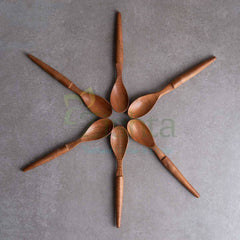
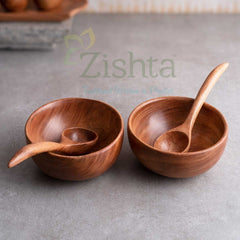
How do the craftsmen make accessories with Neem wood
The process of making neem wood accessories typically involves several steps. Here is a general outline of the process:
- Wood Selection: The first step is to select high-quality neem wood logs or planks for making the accessories. The wood should be free from defects, such as cracks, knots, or decay.
- Cutting and Shaping: The selected neem wood is cut into appropriate sizes and shapes for the desired accessories. This can be done using tools like saws, chisels, or carving knives. The wood is carefully shaped and smoothed to achieve the desired design and functionality.
- Carving and Detailing: Neem wood accessories often feature intricate carvings or detailing to enhance their aesthetics. Skilled artisans use specialized tools to carve patterns, designs, or motifs onto the wood surface. This step requires precision and expertise to create the desired decorative elements.
- Sanding and Smoothing: After carving and detailing, the neem wood accessories go through a sanding process to smoothen the surface. Different grades of sandpaper are used to remove any rough edges or imperfections, resulting in a polished and refined finish.
- Finishing and Polishing: Once the desired shape and smoothness are achieved, the neem wood accessories are ready for finishing touches. The craftsman of Bengal, use mustard oil and polish the surface with a muslin cloth for days to get the smooth polished finish. The tradition is the women of the cluster is given the responsibility of completing this process. This not only enhances the appearance but also provides protection and nourishment to the wood.
It's important to note that the specific process may vary depending on the type of neem wood accessory being made, the skills of the artisans, and regional woodworking traditions. Skilled craftsmen play a crucial role in transforming raw neem wood into beautifully crafted and functional kitchen accessories.
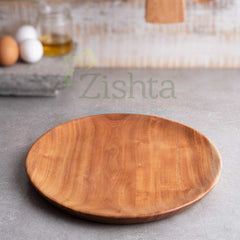
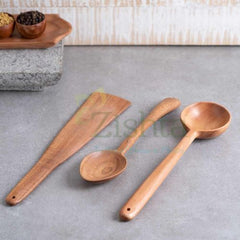
What are some benefits of Neem Wood
Here are some benefits of Neem Wood:
How to Maintain Neem Wood Accessories in the Kitchen
To maintain neem wood accessories in the kitchen and keep them in good condition, here are some guidelines:
- Cleaning: After each use, wash the neem wood accessories with mild dish soap and warm water. Avoid using harsh chemicals or abrasive cleaners that can damage the wood. Rinse thoroughly and dry them immediately using a clean cloth.
- Avoid Soaking: Neem wood can absorb water and swell if soaked for an extended period. It's best to avoid soaking neem wood accessories in water. Instead, clean them quickly and dry them promptly.
- Oil Treatment: Neem wood benefits from occasional oil treatment to keep it nourished and moisturized. Apply food-grade mineral oil or any food-safe wood oil using a soft cloth. Rub the oil into the wood surface, allowing it to penetrate. This helps prevent drying and cracking. Wipe off any excess oil after a few hours.
- Avoid Extreme Temperatures: Neem wood should be kept away from extreme temperatures, such as direct sunlight, as it can cause the wood to warp or crack. Avoid placing neem wood accessories near stovetops, ovens, or hot surfaces.
- Regular Polishing: Neem wood can be polished to maintain its natural lustre and appearance. Use a food-safe wood polish or wax and follow the instructions on the product. Polishing helps protect the wood and enhances its beauty.
- Proper Storage: Store neem wood accessories in a dry and well-ventilated area. Avoid stacking them tightly or keeping them in damp conditions, as moisture can promote mould or mildew growth.
- Avoid Harsh Scrubbing: When cleaning neem wood, avoid using abrasive scrubbers or steel wool, as they can scratch the surface. Opt for soft brushes or sponges to gently clean the wood.
- Regular Inspection: Periodically inspect your neem wood accessories for any signs of damage or wear. If you notice any cracks, splinters, or loose parts, take immediate steps to repair or replace them.
By following these maintenance practices, you can ensure that your neem wood kitchen accessories remain in good condition, prolonging their lifespan and allowing you to enjoy their benefits for a long time.
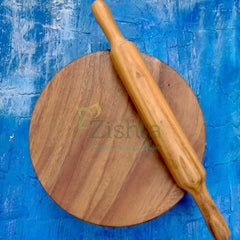
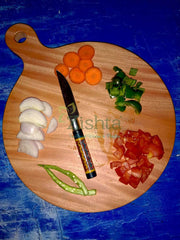
Precautions to be taken against Neem wood cracking
Wood in general which is used for non- kitchen purpose is fumigated and chemically processed to prevent that from reacting to changing weather conditions and cracking. Please note as neem wood is predominantly used in the kitchen, this process is not done, and we use natural neem wood crafted products to adore your kitchen. Neem wood accessories can crack due to various factors, including the natural characteristics of the wood and improper care or handling. Here are some reasons why neem wood accessories may develop cracks:
- Moisture Imbalance: Neem wood is susceptible to changes in moisture levels. When exposed to excessive moisture or prolonged water contact, the wood can absorb it unevenly, causing it to expand and contract. This repeated swelling and shrinking can lead to stress on the wood fibres, resulting in cracks.
- Drying Too Rapidly: Neem wood should be allowed to dry naturally and gradually. If the drying process is too rapid, such as placing the accessories in direct sunlight or near a heat source, the wood can dry out too quickly, leading to shrinkage and the formation of cracks.
- Insufficient Moisture: On the other hand, if neem wood accessories are not adequately moisturized and nourished, they can become dry and brittle over time. Dry wood is more prone to cracking, especially in low-humidity environments.
- Incorrect Storage: Improper storage conditions can contribute to cracking. If neem wood accessories are stored in damp or humid areas, they may absorb excess moisture, leading to swelling and eventual cracking. Similarly, storing them in extremely dry conditions can cause the wood to dry out and crack.
- Physical Stress: Neem wood can crack due to physical stress or pressure. If the accessories are subjected to excessive force, impact, or rough handling, the wood fibres can be damaged, resulting in cracks.
- Natural Wood Characteristics: Like any natural material, neem wood may have inherent defects or irregularities such as knots, grain patterns, or natural stress points. These areas can be more prone to cracking, especially if they are exposed to stress or moisture imbalance.
Regular inspection and timely repairs or replacements can also help prevent further damage if cracks do occur.
Neem has always played a significant role in our traditions and these craftsmen had for generations leveraged the traditional knowledge to make useful and important accessories that not just benefit our daily lives but add an aesthetic zing to our homes. Embrace our traditions with including a few neem wood products in your modern kitchen.
Also, read our blog on benefits of neem.

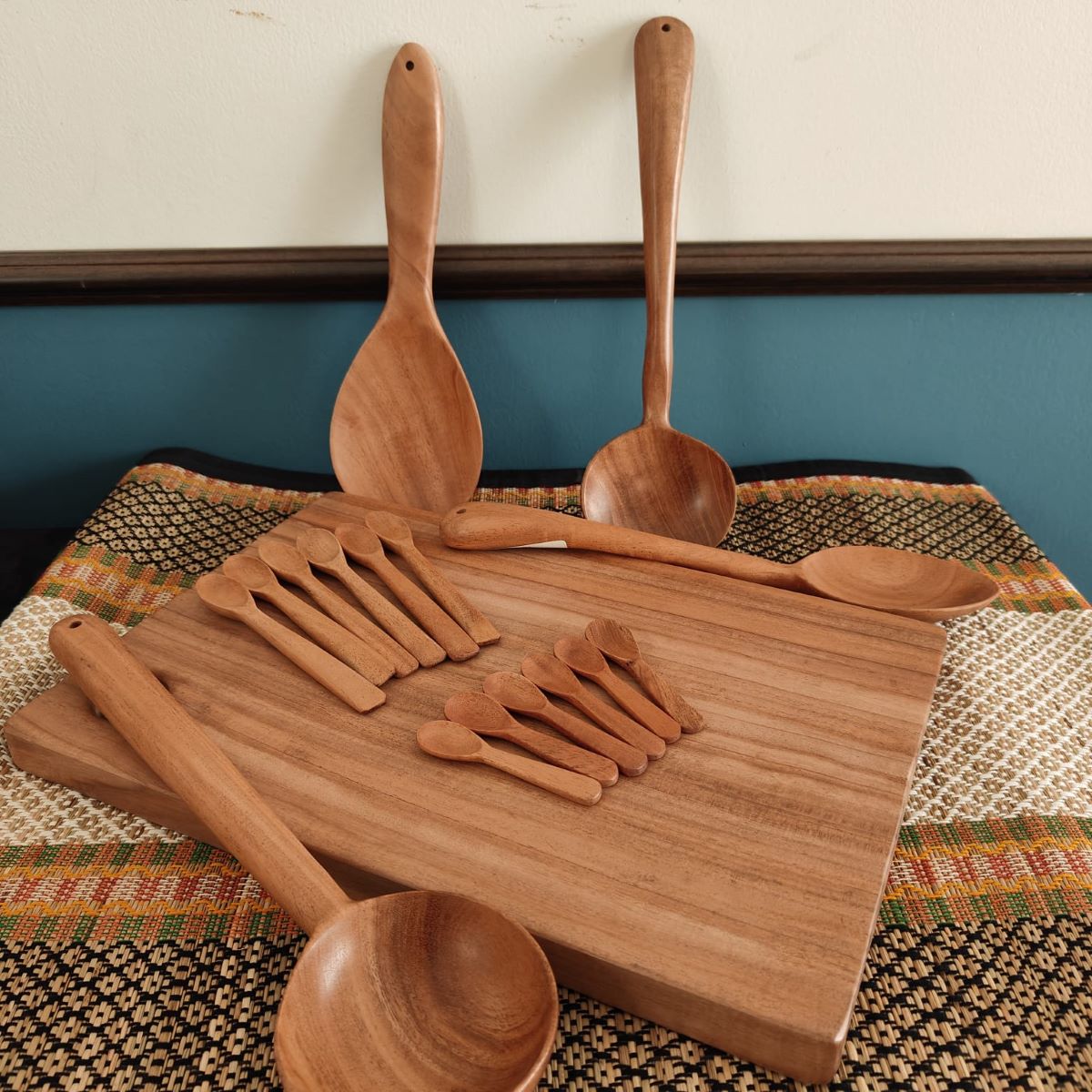

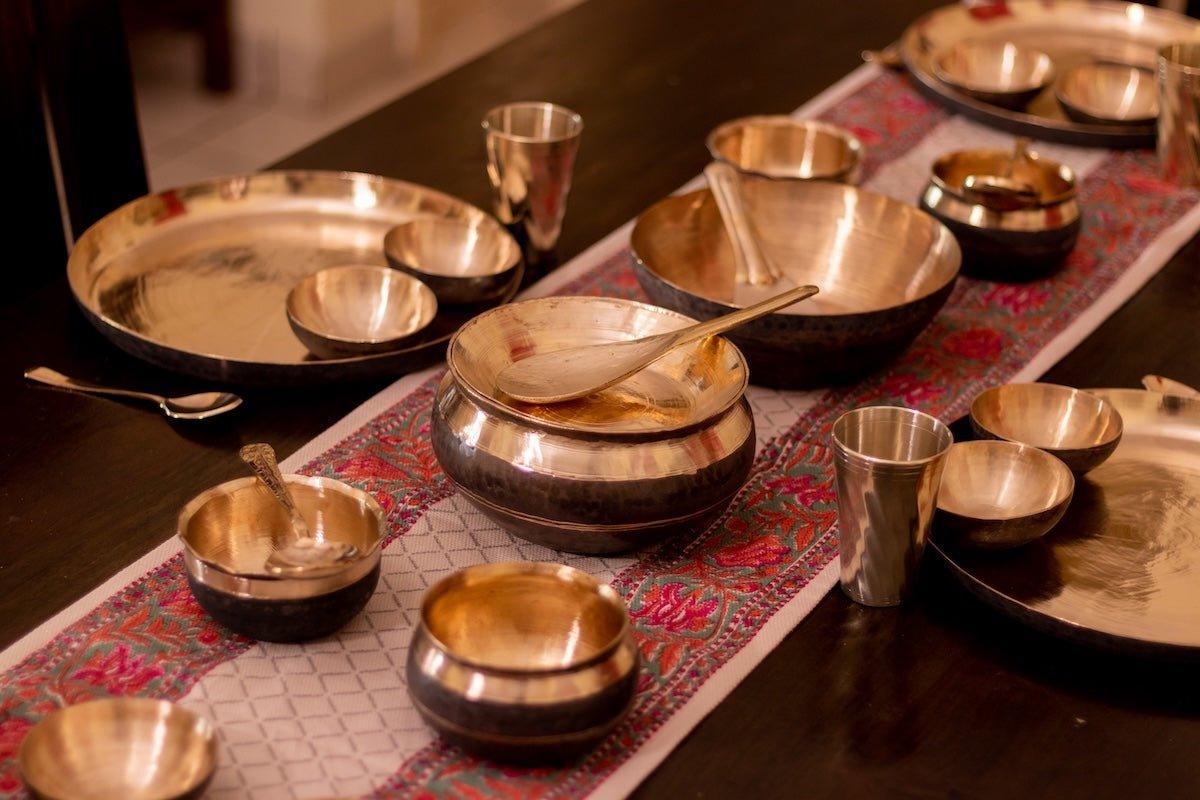
2 comments
Smita
Want a neem wood sambar ladle and sabzi stir frying 2 ladles. Can u give me rate info on this.
Do you have agents in Bangalore. Their contact number.
I stay at Indira Nagar Bangalore 560075.
Nagesh Kamat
Could you make a buttermilk churner ( khavlo), to churn it with the traditional style? With a thin rope ?
Leave a comment
All comments are moderated before being published.
This site is protected by hCaptcha and the hCaptcha Privacy Policy and Terms of Service apply.